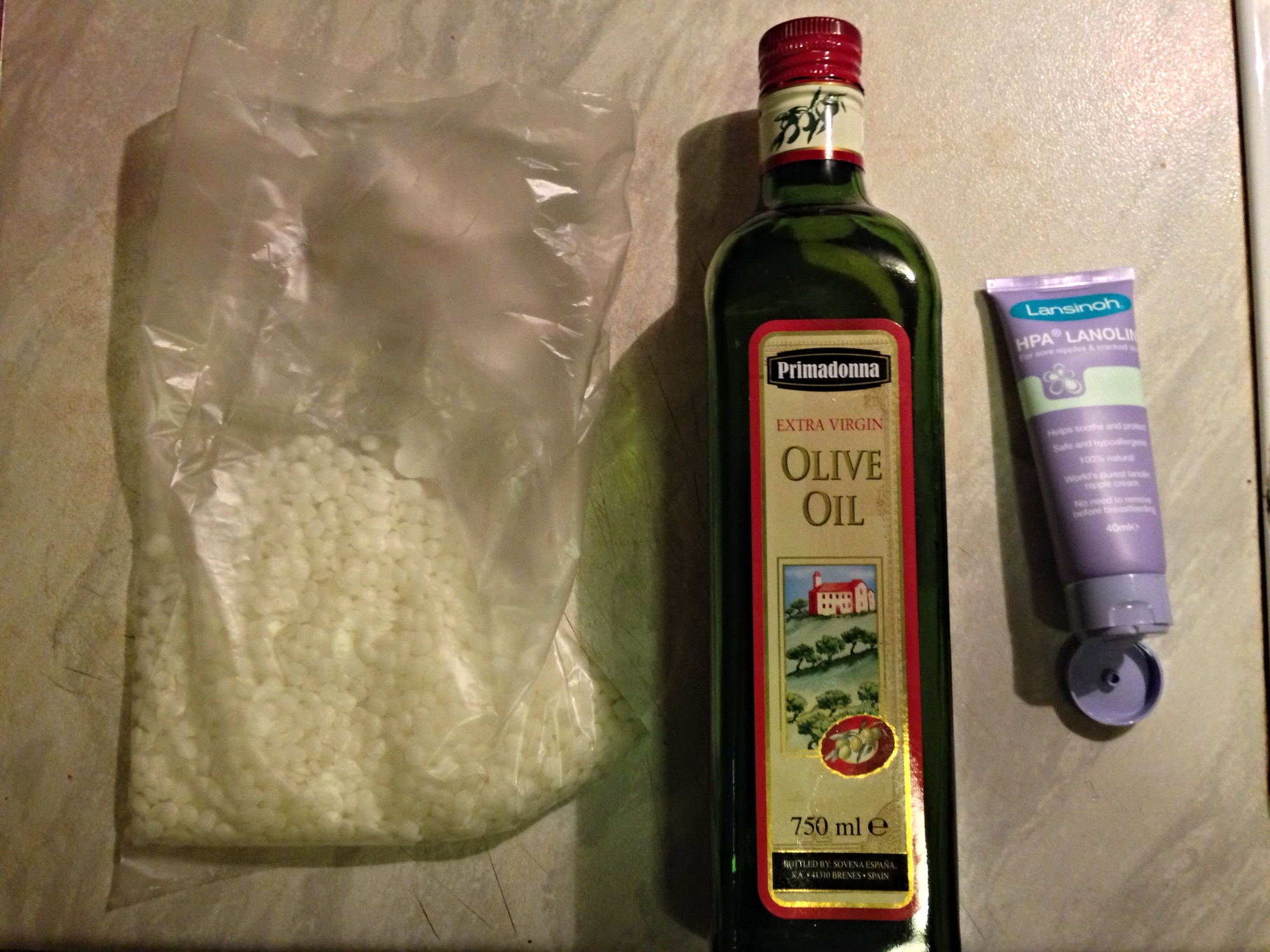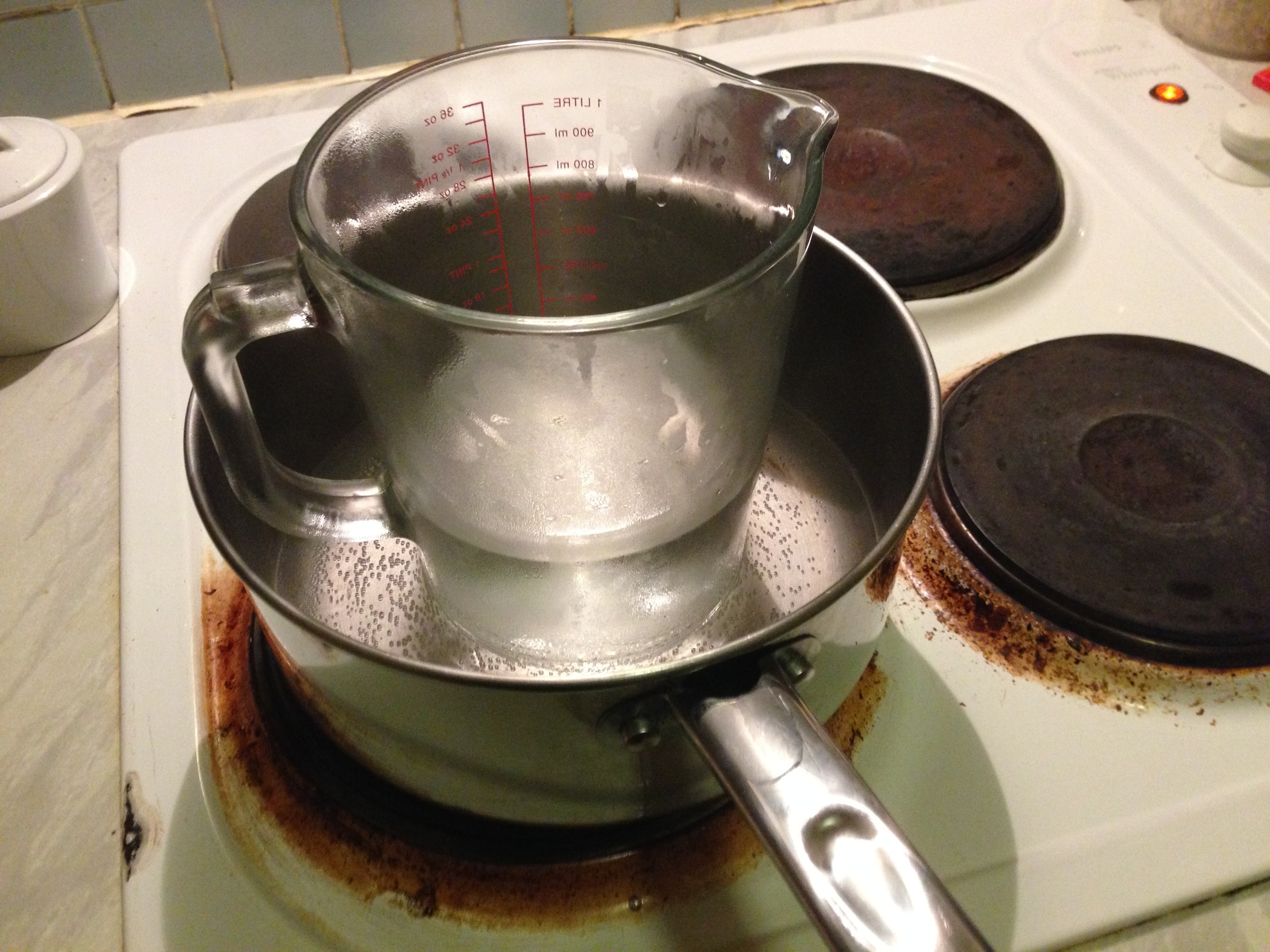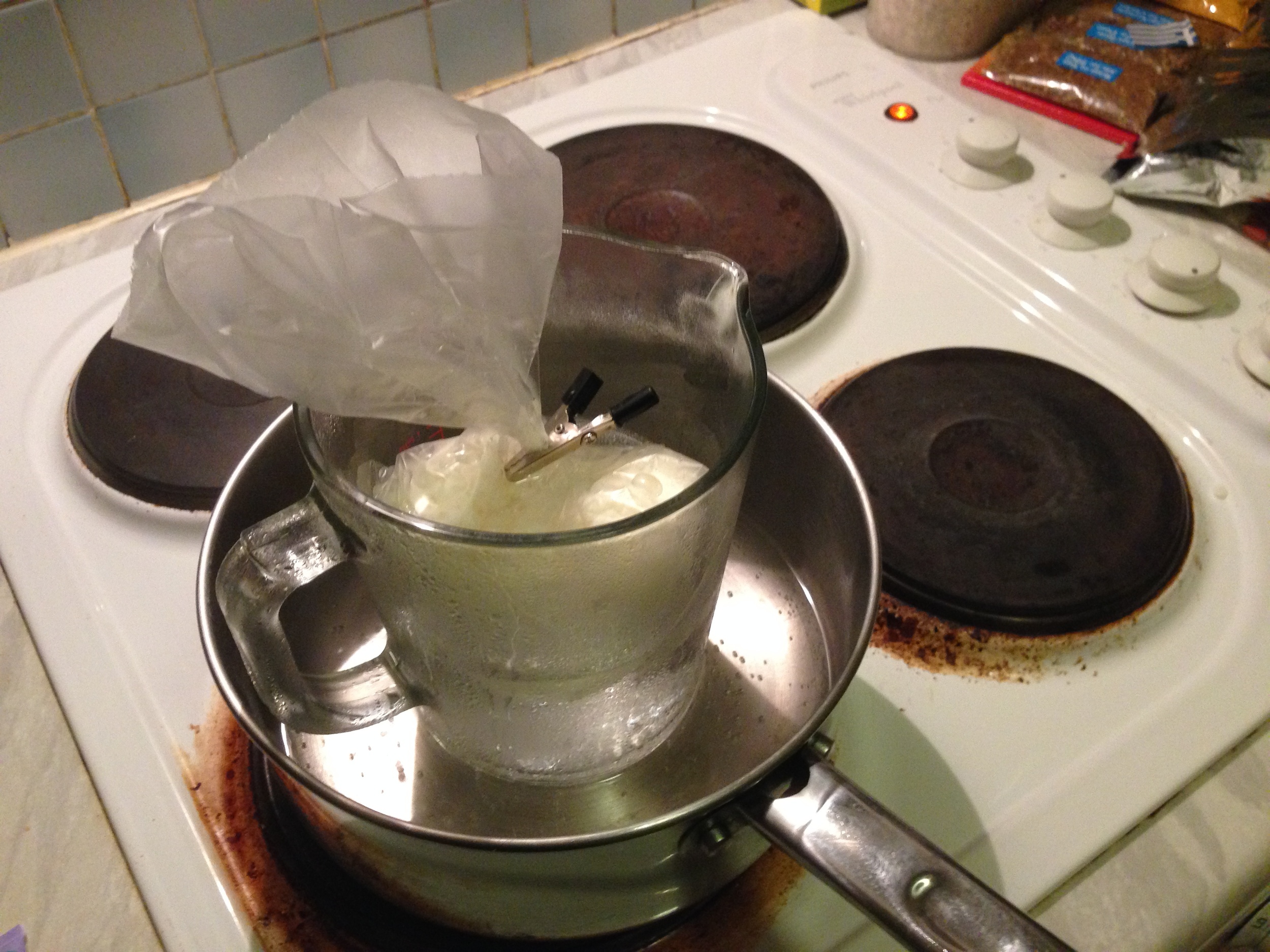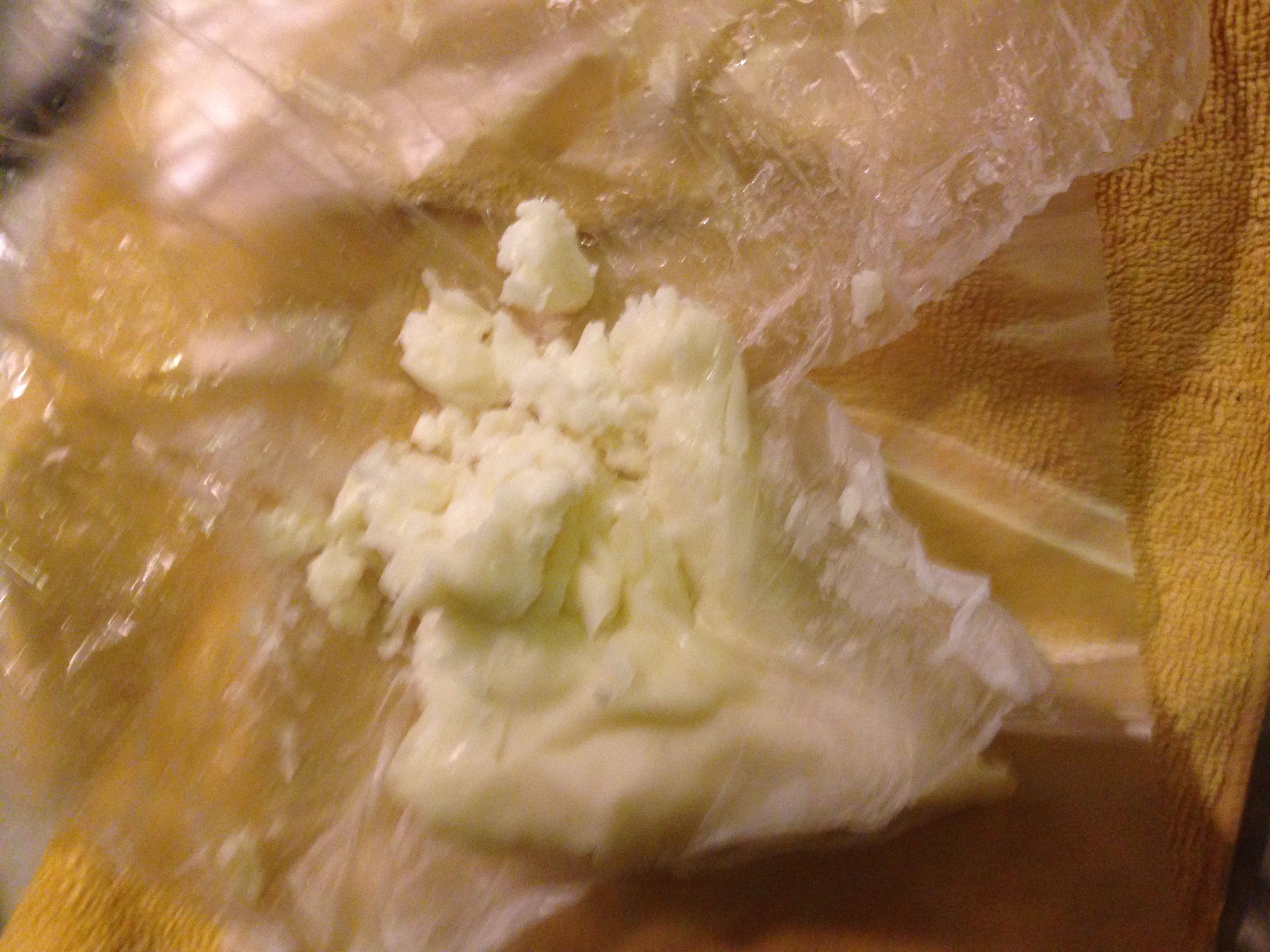Further research brought up a mention of Ann Kroeber, also previously featured in Tonebenders, and her use of a FRAP contact mic. An old colleague of her's mentioned mixing the natural moisturiser, lanolin, often used in crafts and health products to keep the beeswax sticky. So, with my beeswax order having arrived, I set about making my own contact mic beeswax putty.
Ingredients:
- 1 cup of beeswax pellets
- 2 tsps olive oil
- 1 1/2 tsp lanolin
Method:
I followed the method from the video above, except for adding some lanolin while adding the oil.
Also, I gently heated the oil and lanolin together into a mixture before adding, so the mixture wouldn't cool the melted wax around it.
I found the wax took a lot longer to melt than I thought, though I was using a large pyrex measuring jug in the pan, instead of a small cup like in the video tutorial.









